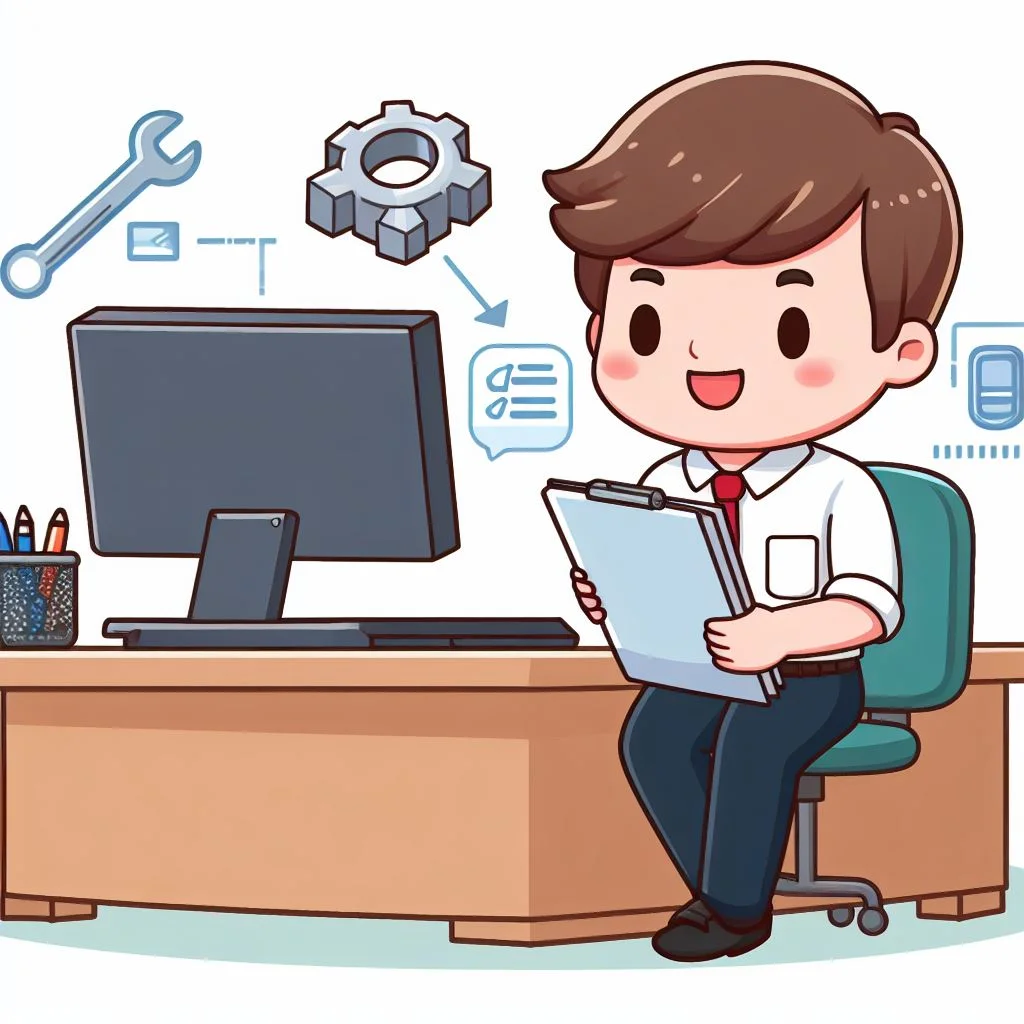Unraveling the Challenges of Sketching in the Drawing Mode in Creo

Creo Parametric, a powerful 3D CAD software developed by PTC, is widely used in the field of engineering and product design. It offers a wide range of tools and functionalities to create, edit, and document 3D models. One of the essential aspects of using Creo is the creation of detailed drawings, which play a crucial role in communication and documentation. In this blog post, we will explore various aspects of creating effective Creo drawings, including sketching in the drawing mode, modifying sketched entities, user-defined drawing formats, adding and removing sheets, creating tables, and generating BOM (Bill of Materials) and balloons in drawings. By the end of this guide, you'll have a better understanding of how to leverage Creo for creating accurate and professional drawings. If you need assistance with your Creo CAD assignment, we are here to help you navigate through the intricacies of this powerful software.
Sketching in the Drawing Mode: The Foundation of Technical Drawings
The ability to sketch effectively in the drawing mode of Creo Parametric is a fundamental skill for engineers and designers. Whether you are creating detailed manufacturing drawings, schematics, or assembly diagrams, the accuracy and clarity of your sketches are crucial for effective communication and documentation. In this section, we will delve deeper into the process of sketching in Creo's drawing mode, breaking it down step by step.

Open the Drawing: Before you can start sketching, you need to open the relevant drawing in Creo Parametric. This drawing typically corresponds to a 3D model that you've previously created. If you haven't already done so, it's essential to have the 3D model ready as it will serve as the reference for your sketch. The drawing mode is where you'll be translating the 3D model into 2D representations.
Select a Sheet: Once you're inside the drawing mode, you need to choose the appropriate sheet for your sketch. Creo provides a range of standard sheet sizes to choose from, depending on your project's requirements. Selecting the right sheet size and orientation is crucial as it determines the canvas on which you'll create your sketch. Ensure that the chosen sheet size accommodates your design and any required annotations.
Launch Sketch Mode: To create a sketch in Creo, you must enter the sketching mode. There are a couple of ways to do this. One option is to select the "Sketch" tool from the toolbar. Alternatively, you can use the keyboard shortcut Ctrl + E to activate sketch mode. Once in sketch mode, you're ready to start defining your sketch elements.
Define Sketch Elements: In sketch mode, you have access to a variety of sketching tools, including lines, circles, arcs, rectangles, and more. These tools enable you to create the necessary geometric elements on the sheet. To maintain precision and accuracy, you can snap to existing model geometry or use precise dimensions to specify the size and placement of sketch entities.
- Snap to Geometry: When you snap to existing model geometry, you're essentially aligning your sketch with the features of the 3D model. This ensures that your 2D sketch accurately represents the 3D object. Snapping can be done to endpoints, midpoints, intersections, and more.
- Use Dimensions: Accurate dimensions are key to ensuring that your sketch conforms to the design requirements. Creo Parametric allows you to apply dimensions to your sketch entities, either while sketching or after the fact. These dimensions can be defined as basic measurements (e.g., length, radius) or as more complex constraints (e.g., parallel, perpendicular).
As you create your sketch elements, keep in mind that they should convey the essential information about the design. This includes not only the physical dimensions and shape but also any key features or relationships between components. Properly defined sketches lay the foundation for creating precise and manufacturable parts.
Add Annotations: Beyond the geometric elements of your sketch, annotations play a vital role in communicating design intent and providing additional information. Annotations can include text notes, labels, callouts, and symbols. Here are some common types of annotations you might include:
- Text Notes: These are used to provide detailed explanations, specifications, or other relevant information about the sketch.
- Dimensioning: Accurate dimensions should be added to specify the size and position of the sketch entities. Creo Parametric offers powerful dimensioning tools for this purpose.
- Geometric Tolerances: If your design requires specific tolerances for manufacturing, you can add geometric tolerances to the sketch.
- Symbols and Callouts: Symbols, such as surface finish symbols or weld symbols, can be added to convey additional information. Callouts are used to reference specific features or components within the sketch.
Annotations are crucial for ensuring that anyone reviewing the drawing can understand the design's critical aspects and requirements.
Exit Sketch Mode: Once your sketch is complete, it's time to exit the sketch mode. This can be done by clicking the "OK" button or using the appropriate keyboard shortcut, typically Ctrl + E again. Exiting sketch mode finalizes your sketch and incorporates it into the drawing. Your sketch is now a permanent part of the drawing document, and you can proceed with additional sketches, annotations, tables, and other elements as needed.
In summary, sketching in the drawing mode of Creo Parametric is the foundational step in creating technical drawings that accurately represent your 3D designs. Through precise sketching, thoughtful annotation, and adherence to design standards, you can create drawings that effectively convey design intent, facilitate communication, and support the manufacturing and assembly processes. Mastering this skill is essential for engineers and designers working with Creo Parametric to bring their ideas to life.
Modifying the Sketched Entities
In many cases, you might need to modify the sketched entities in your drawing to achieve the desired design intent. Creo Parametric offers various tools for modifying sketched entities:
- Edit Definition: To modify an existing sketched entity, select it and right-click to access the "Edit Definition" option. You can then change its properties, dimensions, or other attributes.
- Drag Handles: Some sketch entities, like lines and arcs, have drag handles that allow you to adjust their length, angle, or other properties by clicking and dragging them.
- Offset, Trim, and Extend: Use tools like "Offset," "Trim," and "Extend" to make precise modifications to the sketch entities. These tools are available in the sketching toolbar.
- Replace Entity: If you need to replace one sketch entity with another, use the "Replace Entity" command. This is helpful when you want to change a line to an arc, for example.
User-Defined Drawing Formats
User-defined drawing formats are essential for creating drawings that adhere to your organization's specific standards. These formats typically include title blocks, revision tables, and other standardized elements. In Creo, you can create and save your custom drawing formats as templates. Here's how:
- Create a Drawing Format: In the drawing mode, use the "Format" command to add elements such as title blocks, logos, borders, and notes to your drawing. Customize the format according to your needs.
- Save as Template: Once you have designed your preferred drawing format, save it as a template. This will allow you to reuse it in future drawings. Go to File > Save As > Template to save it in the appropriate directory.
- Apply the Template: When creating a new drawing, you can apply your user-defined drawing format template. Select "New" and choose your template from the list of available templates.
Retrieving User-Defined Formats in the Drawings
After creating and saving user-defined drawing format templates, it's crucial to know how to retrieve and apply them when working on a new drawing. Here's a step-by-step guide:
- Create a New Drawing: Start by creating a new drawing in Creo Parametric.
- Define the Format: When you're in the drawing mode, select the "Format" command from the toolbar.
- Choose User-Defined Format: In the Format dialog, choose the "User-Defined" tab. Here, you will find the list of drawing format templates you've created. Select the one that suits your current project.
- Apply the Format: Click "OK" to apply the selected drawing format to your drawing. This will populate your drawing with the elements you've defined in the template, such as title blocks and other standard annotations.
Adding and Removing Sheets in the Drawing
In some cases, you may need multiple sheets to document a complex project or to provide different views of a 3D model. Creo Parametric allows you to add and remove sheets in your drawing. Here's how to do it:
Adding Sheets:
- Open your drawing and go to the drawing mode.
- Click on the "Sheet" tab in the drawing window.
- Select the "Add Sheet" option. You can choose from various sheet sizes and orientations to suit your needs.
- The new sheet will be added to your drawing, and you can begin documenting on it.
Removing Sheets:
- In the drawing mode, navigate to the "Sheet" tab.
- Right-click on the sheet you want to remove.
- Select "Delete Sheet" from the context menu.
- Confirm the deletion, and the selected sheet will be removed from your drawing.
Creating Tables in the Drawing Mode
Tables are essential for presenting information in a structured and organized manner in your drawings. Creo Parametric offers the capability to create tables within your drawing. Follow these steps to create tables:
- Access the Drawing Mode: Open your drawing in Creo Parametric.
- Click on the "Table" command in the toolbar.
- Choose Table Type: Select the type of table you want to create, such as a parts list (BOM - Bill of Materials) or a general table for annotations.
- Define Table Parameters: Configure the table settings, including the number of columns, column headers, and other relevant properties.
- Add Data: Populate the table with data. For a BOM table, you can link it to your 3D model to automatically list the components used.
- Customize Appearance: Adjust the appearance of the table, including fonts, borders, and cell formatting.
- Place the Table: Click in the drawing to place the table where you want it to appear.
Generating the BOM and Balloons in Drawings
The Bill of Materials (BOM) is a crucial part of engineering drawings, as it provides a list of components and parts used in a design. Creo Parametric offers tools for generating BOMs and adding balloons to your drawings to reference specific components. Here's how you can do it:
Generating BOM:
- In the drawing mode, go to the "Table" command and select "BOM."
- Configure BOM Settings: Define the properties and columns you want in your BOM, such as part numbers, descriptions, quantities, and more.
- Link to Model: Creo allows you to link the BOM to your 3D model. This way, any changes in the model will automatically update the BOM in the drawing.
- Place BOM in Drawing: Click in the drawing to place the BOM table. It will list all the components and their details.
Adding Balloons:
- In the drawing mode, select the "Balloons" command.
- Click on the components in your drawing that you want to balloon. Creo will automatically add balloons with numbers to these components.
- Configure Balloon Properties: You can customize the appearance and style of the balloons, such as font size and shape.
- Ensure Proper Annotation: Balloons should be properly annotated to match the corresponding entries in the BOM.
Conclusion
Creating effective Creo drawings is a fundamental skill for engineers and designers. Whether you're sketching in the drawing mode, modifying sketched entities, using user-defined drawing formats, or working with tables and BOMs, Creo Parametric offers a wide range of tools to help you document your designs accurately and professionally. By mastering these techniques, you'll be well-equipped to create clear and informative drawings that facilitate effective communication and documentation in your projects. Remember that practice and continuous learning are key to becoming proficient in using Creo for drawing creation.